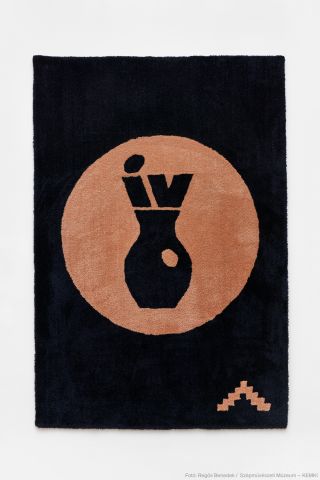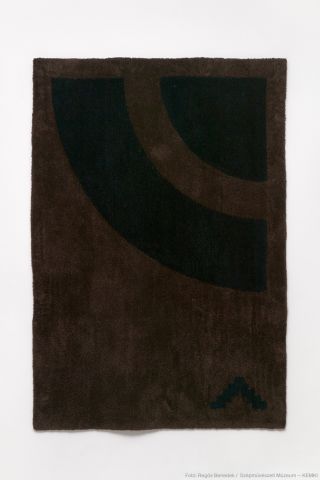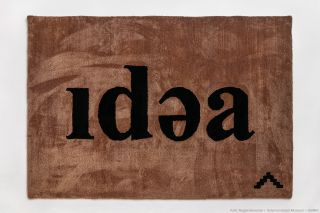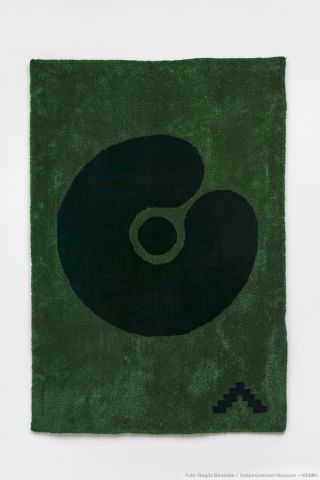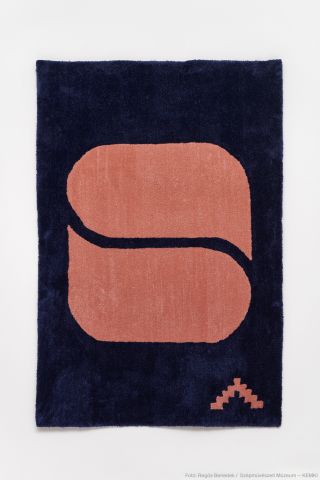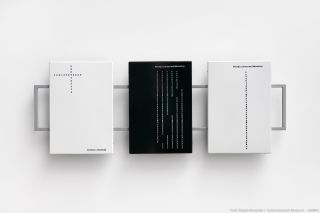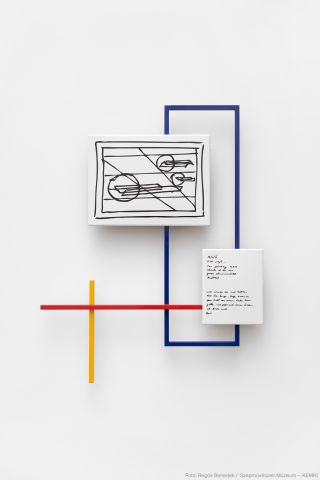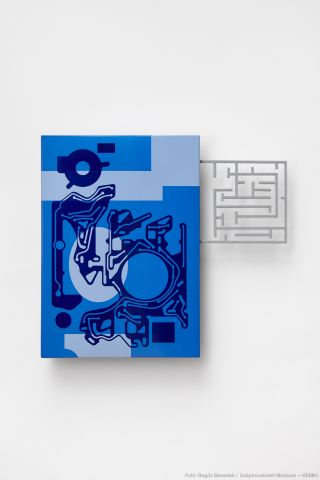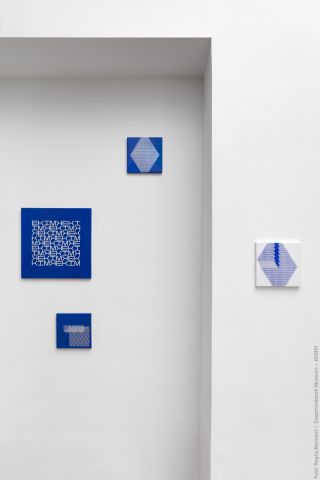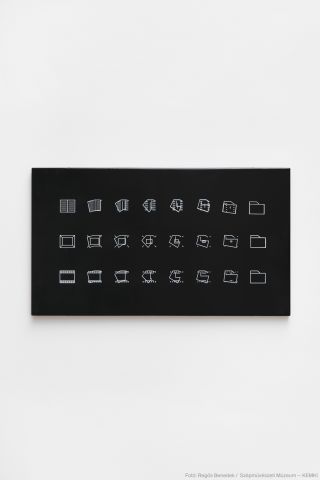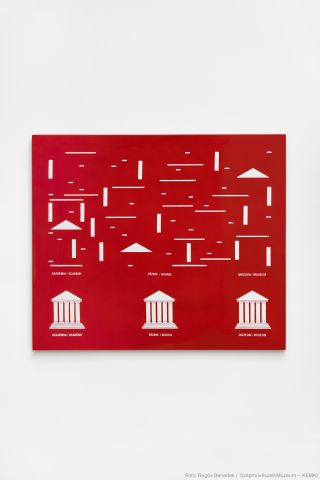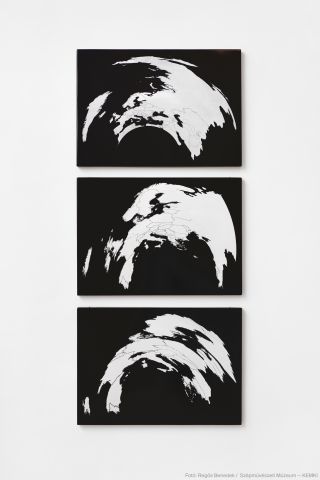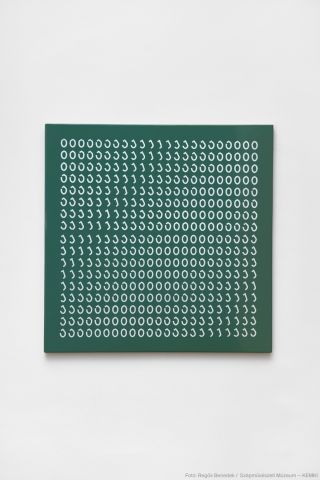The Artworks
Mezzanine - Right Side Corridor and Research Room
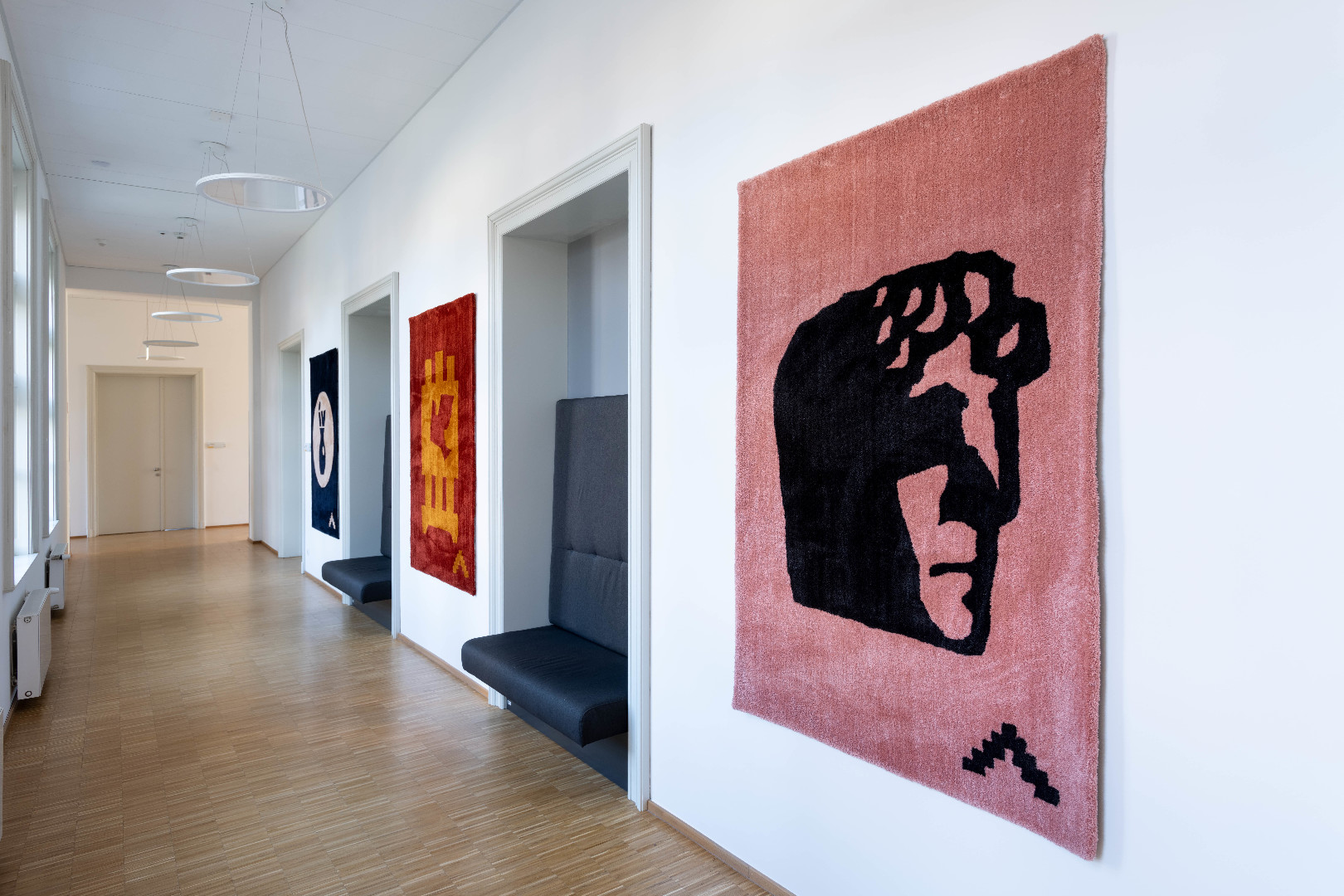
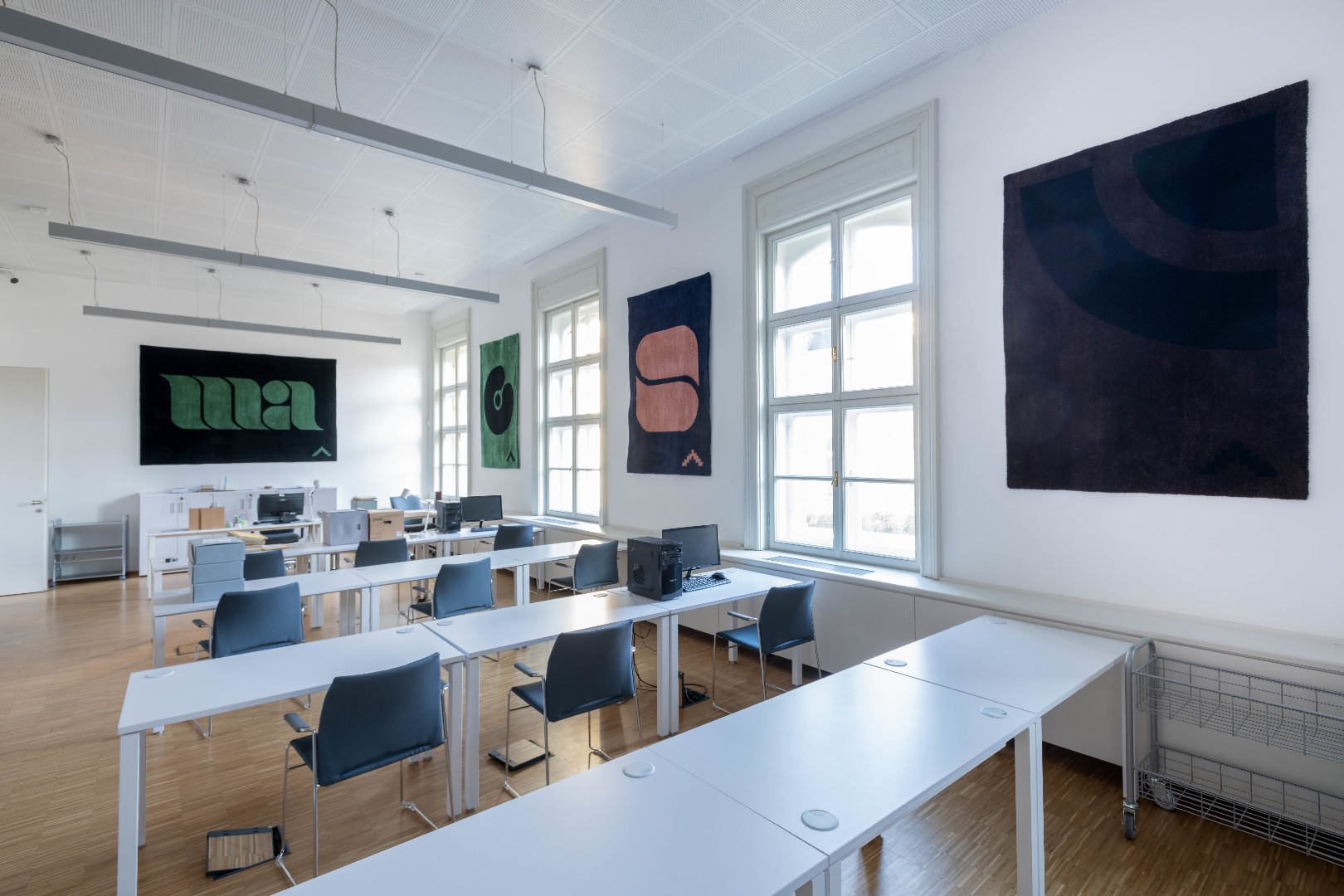
Zsófia Gyenes and Ferenc Gróf: (Dis)organigram, 2021-2022
Ferenc Gróf’s research – conducted at the KEMKI’s Archive and Documentation Centre (ADK) between October 2021 and May 2022 – was primarily focused on the history of the Hungarian system of art institutions, continued to present day. While a significant number of these institutions, in the absence of a successor entity, have ceased their operations altogether, some are still very much present and continue to be important “actors” on the contemporary art and design scene. The documents examined by Gróf—the majority of which were transferred from the former Lectorate of Fine and Applied Arts to the Hungarian National Gallery in 2014, and then to the KEMKI ADK in 2021—provided the coordinates of the visual culture of the last fifty to sixty years, ranging from public sculpture to everyday objects, and from invoices issued by the Képcsarnok Vállalat (Gallery Company) to the complaints of its customers.
From the researched logos and symbols, which were collected and photographed while studying the files and documents dating from the second half of the 1960s till today, a perpetually changing organogram began to emerge. Using this collection as raw material and in collaboration with textile designer Zsófia Gyenes, Gróf began to work on a series of tapestries which traced the fragmented structure of the art infrastructure of twentieth-century Hungary. These tapestries, carpets and wall hangings incorporate popular decorative elements from the period of the processed documents, elements which used to decorate the offices of foreign delegations and domestic public institutions. As the various technologies of tapestry making have traditionally tapped into the “borderland” separating the fine and applied arts, the ideas of the artist duo were also influenced by overtones of institutional critique, following the “trail” of the Arts & Crafts movement.
The colour scheme of the tapestries designed for KEMKI was determined by the archival documents: yellowed stationary, the blue of stamps, and the shades of worn binders and shuffled-around dossiers. The series, currently composed of eight wall hangings, was finally completed in the summer of 2022, in a temporary carpet-weaving workshop set up on a vacant family property in Marcali.
Mezzanine - Left Side Corridor
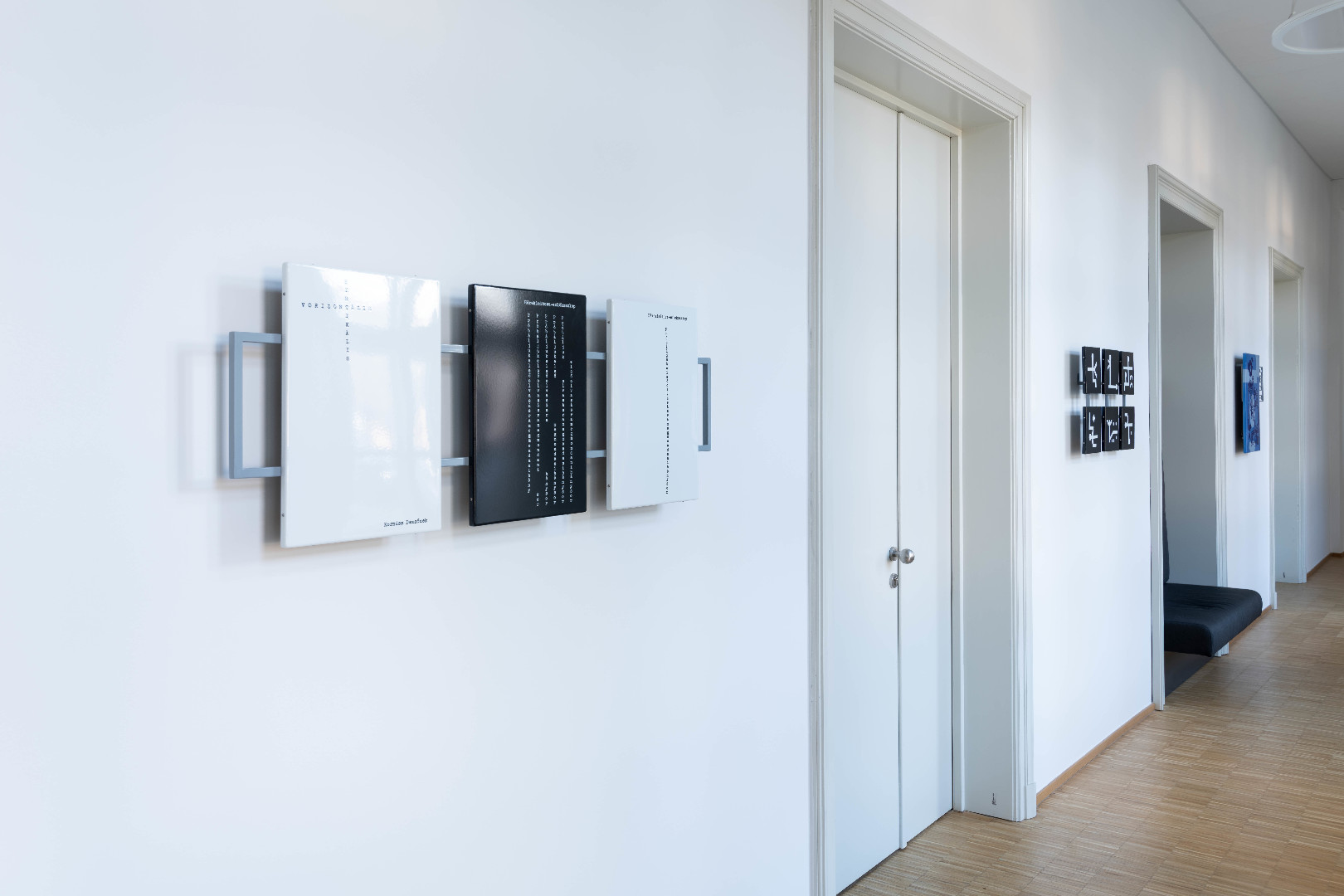
Ádám Albert: My Appropriations, 2022
As a first step in the process of creating these works, a consultation took place between the artist and art historian colleagues. This was followed by the compilation of a list of artists who are considered to have been important actors in Hungarian art history, and are also well represented in the archival materials of the Archive and Documentation Centre (ADK) of KEMKI, as well as at an “overall institutional level” (such as in the collections of the Hungarian National Gallery).
The research material, and the combination of individual skills and knowledge—along with the archival/institutional modes of operation and the system of needs and expectations we became familiar with along the way—were all influencing factors in the resulting list, ideas, and plans. The initial period of our collaboration—which related more to the creation of works displayed on the mezzanine—was fundamentally defined by the tangible proximity, quality, and quantity of files and documents, personal and cultic objects, artworks and documents, as well as sensory experiences of the spaces they occupied. Perhaps as a result of this, the pieces of Albert’s first series consist of individual deep dives, thematic connections, instinctive insights, as well as time portals and research windows opened by a sudden “attraction to certain objects and materials”—all of which mark possible points on a web of references. They signify re-categorisations of knowledge, the assertion of new perspectives, the crossing of genre-based boundaries, as well as the kind of changes in dimension and materials that validate professional knowledge and expertise.
The archival material contains many preparatory drawings, thought fragments and plans outlining ideals that were never or only partially realised by the artists. At the same time, there are also objects, motif-collections and tools that were employed only at a certain stage of the creative process. Some are surviving pieces of evidence for the former existence of works that have since been destroyed. During his research, Albert looked for those ideal-typical fragments, details and memory traces in the archival and documentary material of selected artists, from which a new, as yet non-existent, physical object could be created that is filtered through his system of research/artistic criteria. In their elements and constructs these relief-like objects refer back to—and communicate with—the appropriated source material in a layered manner. At the same time, embedded in the surfaces, structures, materials, and motifs of these works, which sit subtlety away from the wall, we also find demonstrations of this relational system.
First Floor
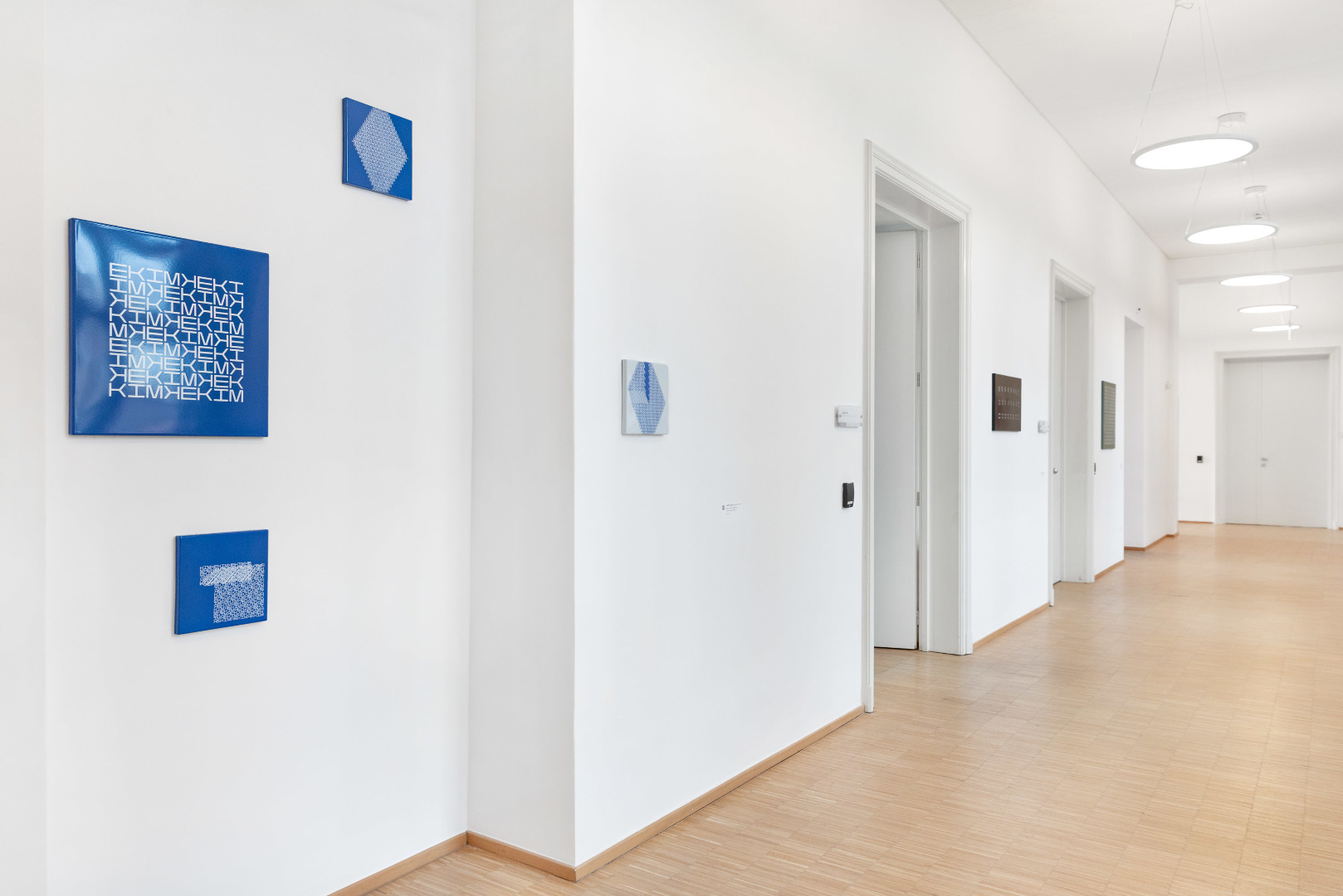
These works “take a step back”: the artists, in possession of the new understanding and knowledge acquired in the process of working with the documents in the collections, expand their framework for examining the institutional context. They organise and inhabit the space along loosely related ideas and concepts, incorporating their own points of reference. Enamel remains a common medium, drawing from both oeuvres the artists’ skills in printmaking and graphic design, as well as their interest in the history of typography, their capacity for critical design, and such “special” attributes as Albert’s experience of working with the ISOTYPE system, or Gróf’s dedication to cartography. Instead of complex object formulation and structural organisation, the emphasis shifts towards image type, illustrative figures, and analytical methods. There is a certain leanness to the visual language: it operates with flow charts and maps, it transforms symbols, it destroys and rebuilds pictograms. The artists’ robustly conceptual approach is focused not on individual documents (or a group of documents classifiable along a sub-problem), but on the character of the institutional identity that is being formed, or on its individual elements. These are the subjects explored and thematised by their works of enamel art: from the typographic experiments involving the acronym “KEMKI”, through institutional modes of operation, skills and frameworks, all the way to the contradictory concept of Central Europe, which “becomes visible” at the intersection of diverging political, economic, cultural, and historiographical etc. viewpoints.
– Central European Research Institute for Art History (KEMKI)

